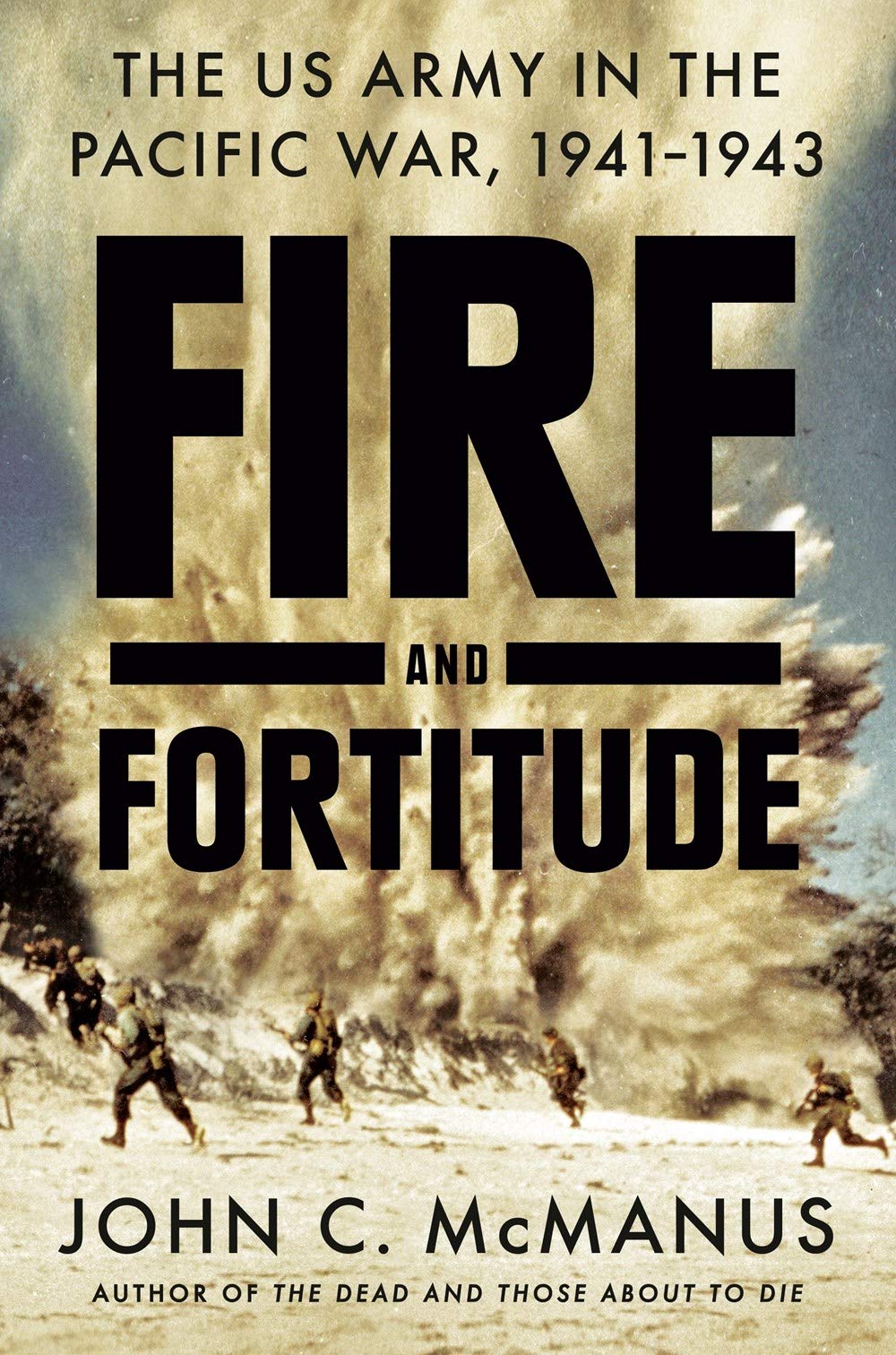 I am always up for a good military history: John Keegan’s The First World War, Correlli Barnett’s Britain and Her Army, Ivan Musicant’s The Banana Wars, Douglas Porch’s The French Foreign Legion, Brian McAllister Linn’s Guardians of Empire, and D. J. Goodspeed’s The German Wars 1914-1945. John MacManus’ Fire and Fortitude: The U.S. Army in the Pacific War, 1941-1943 is a good addition.
I am always up for a good military history: John Keegan’s The First World War, Correlli Barnett’s Britain and Her Army, Ivan Musicant’s The Banana Wars, Douglas Porch’s The French Foreign Legion, Brian McAllister Linn’s Guardians of Empire, and D. J. Goodspeed’s The German Wars 1914-1945. John MacManus’ Fire and Fortitude: The U.S. Army in the Pacific War, 1941-1943 is a good addition.
A good volume on the Pacific war in World War 2 is Ronald H. Spector’s Eagle Against the Sun. That covers the whole war and all the military branches. MacManus’ volume focuses on the U.S. Army the first two years.
The average person thinks the U.S. Marines did all the fighting in the Pacific in WW2. The Marines only had six divisions, the U.S. Army had 21 infantry divisions, one airborne, regimental combat teams, and tank battalions. Marines comprised 5 percent of the U.S. military in WW2. The United States Marine Corp is also very good at self-promotion.
The book starts out with the attack on Pearl Harbor in Hawaii on December 7, 1941 and the reaction of the Army garrison. The fighting in the Philippines is covered and Gen. Douglas MacArthur as commander. MacArthur does not come out well in McManus’ assessment. Periodically through the book, the fate of those taken prisoner at Bataan and Corregidor and living hell they went through is covered.
McManus gives space to examination of the personalities of the commanding generals: Alexander Patch, Richard Sutherland, J. Lawton Collins, Robert Eichleberger etc. He also uses a lot of first person accounts instead of summarizing events. I notice this is a trend in more recent WW2 histories. Bill Sloan used that style in Undefeated: America’s Heroic Fight for Bataan and Corregidor.
Chapters are given to the U.S. Army presence in Australia and some of the problems there. He also covers Gen. Stilwell in Burma.
The prose style makes for quick and easy reading. McManus has a few insights into the Pacific war that I have not come across. He ends with the taking of the Makin Atoll in the Marshall Islands in November 1943 by the 27th Division (New York National Guard) and problems with Marine General Holland Smith. Smith would be a bigger problem in 1944 at Saipan. I assume that McManus is going to finish the history with a companion volume covering 1944-1945.
That looks interesting.
Wasn’t Holland Smith’s nickname “Howlin Mad Smith”?